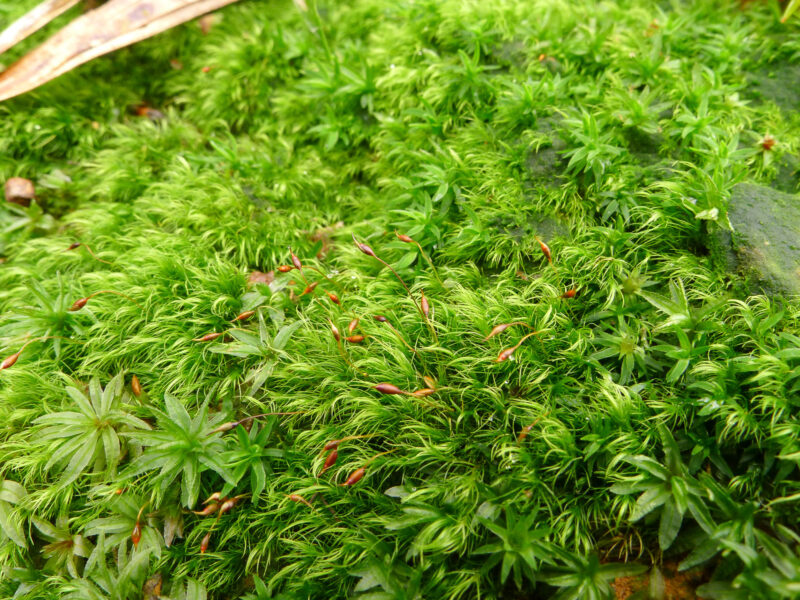Identification notes
Bryologizing in wet areas such as rocky gullies and streams in the uplands of the north and west can be a confusing experience for the enthusiast, with a seemingly endless array of small acrocarps in every crevice and on every rock. How nice, then to see a familiar face such as this moss, which is relatively easy to identify. A small, dark green plant, growing on rock in a flushed area, or in a gravelly stream, about 1 or 2cm tall. The narrow leaves are about 2 or 3mm long – not much to go on yet…but rinse off any gravelly detritus and take a look at a few leaves detached from the stem by a nimble thumbnail. The nerve is excurrent and quite thick near the tip and, strikingly, the cells form deep orange-red patches at the base and corners of the leaf. There is little room for confusion with other species now, apart from, perhaps, its congener, the very rare calcicole B. caespiticia. When fertile, the two species are easily separated, as the capsule of B. acuta is held on a seta above the leaves, whereas that of B. caespiticia is buried amongst the leaves. Infertile material must be confirmed microscopically, and this can be tricky, but thankfully the rarer species is usually abundantly fertile.
Read the Field Guide account












